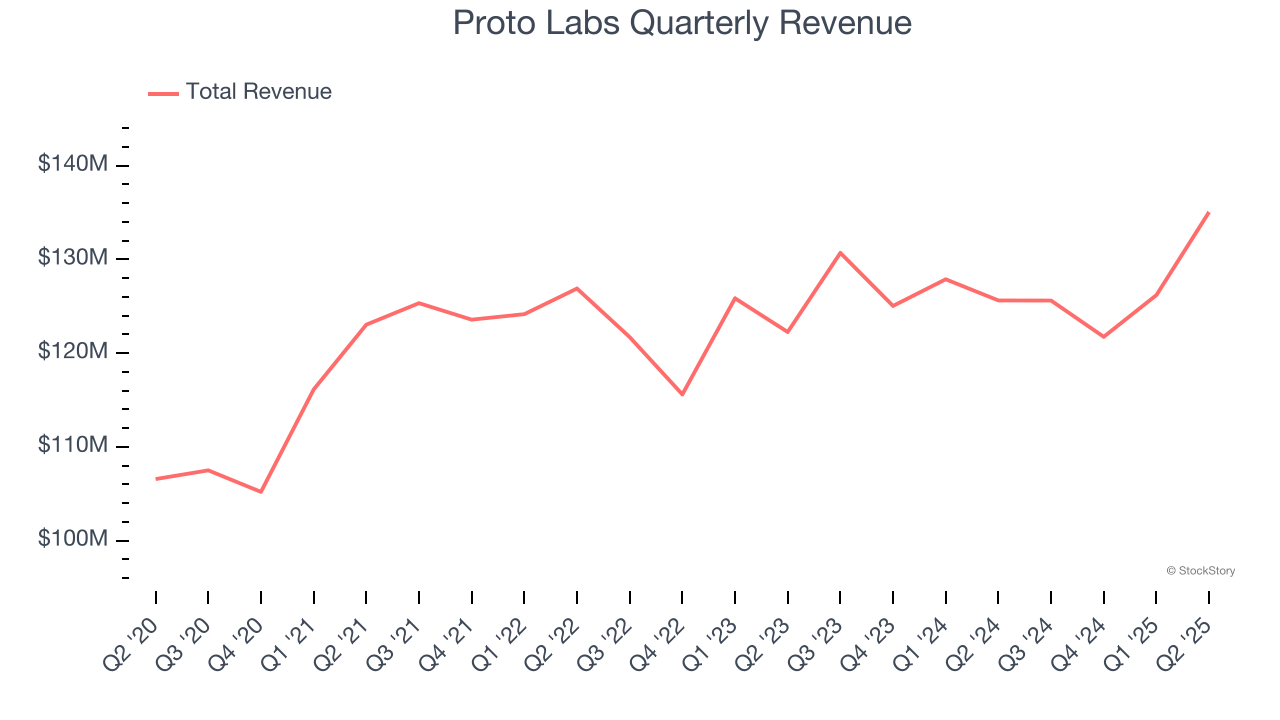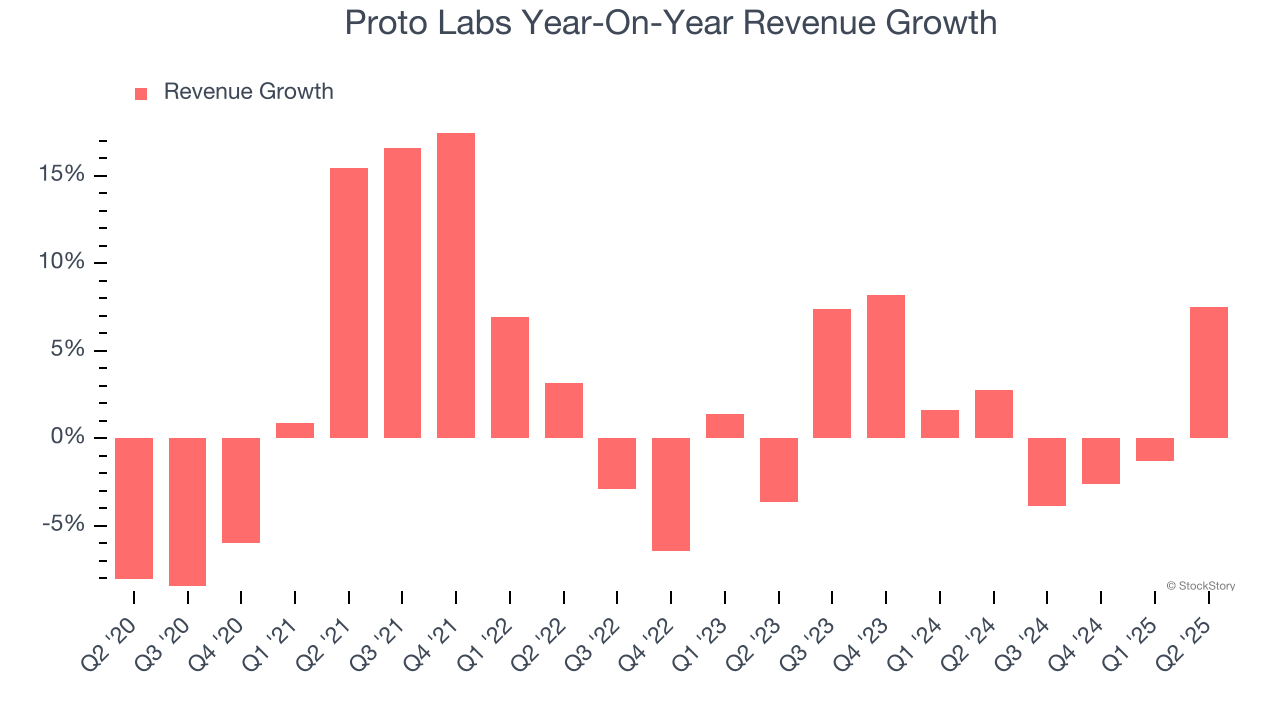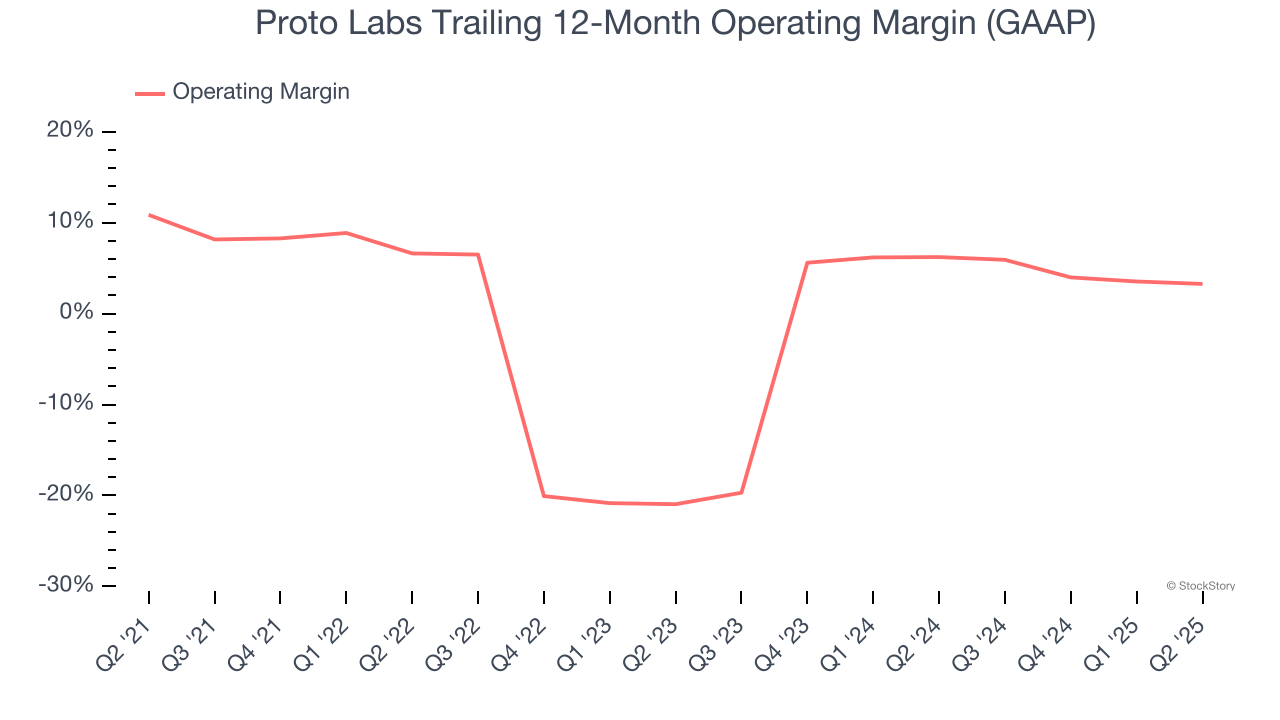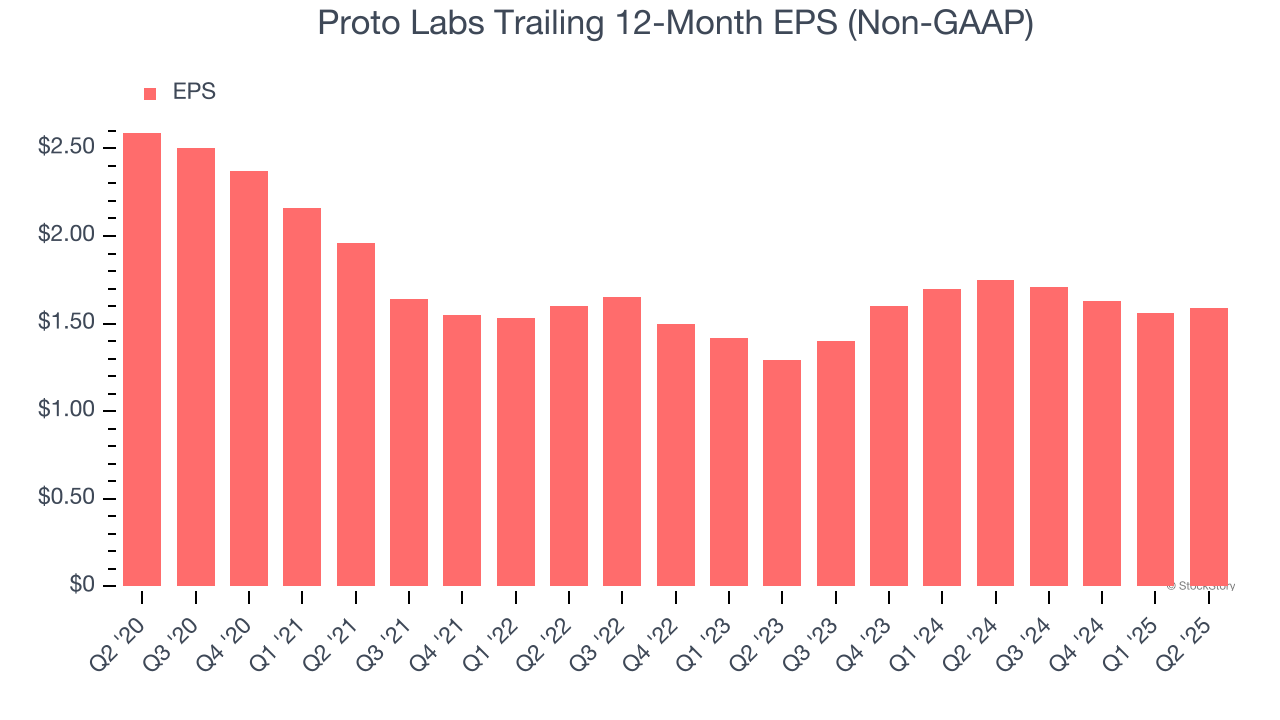
Manufacturing services provider Proto Labs (NYSE:PRLB) announced better-than-expected revenue in Q2 CY2025, with sales up 7.5% year on year to $135.1 million. On top of that, next quarter’s revenue guidance ($134 million at the midpoint) was surprisingly good and 3.1% above what analysts were expecting. Its non-GAAP profit of $0.41 per share was 19.9% above analysts’ consensus estimates.
Is now the time to buy Proto Labs? Find out by accessing our full research report, it’s free.
Proto Labs (PRLB) Q2 CY2025 Highlights:
- Revenue: $135.1 million vs analyst estimates of $128.1 million (7.5% year-on-year growth, 5.4% beat)
- Adjusted EPS: $0.41 vs analyst estimates of $0.34 (19.9% beat)
- Adjusted EBITDA: $19.69 million vs analyst estimates of $17.74 million (14.6% margin, 11% beat)
- Revenue Guidance for Q3 CY2025 is $134 million at the midpoint, above analyst estimates of $130 million
- Adjusted EPS guidance for Q3 CY2025 is $0.39 at the midpoint, above analyst estimates of $0.37
- Operating Margin: 3.7%, down from 4.8% in the same quarter last year
- Free Cash Flow Margin: 6.7%, down from 8.2% in the same quarter last year
- Market Capitalization: $932.5 million
“Protolabs generated record quarterly revenue in the second quarter, demonstrating the value we provide to customers and reinforcing our ability to execute in a dynamic and uncertain environment," commented President and Chief Executive Officer Suresh Krishna.
Company Overview
Pioneering the concept of online quoting and manufacturing for custom prototypes and low-volume production parts, Proto Labs (NYSE:PRLB) offers injection molding, 3D printing, and sheet metal fabrication for manufacturers in various industries.
Revenue Growth
A company’s long-term sales performance is one signal of its overall quality. Any business can have short-term success, but a top-tier one grows for years. Regrettably, Proto Labs’s sales grew at a sluggish 2.4% compounded annual growth rate over the last five years. This was below our standards and is a poor baseline for our analysis.

Long-term growth is the most important, but within industrials, a half-decade historical view may miss new industry trends or demand cycles. Proto Labs’s annualized revenue growth of 2.4% over the last two years aligns with its five-year trend, suggesting its demand was consistently weak. 
We can dig further into the company’s revenue dynamics by analyzing its three most important segments: Injection Molding , CNC Machining , and 3D Printing, which are 35.1%, 45.9%, and 15.7% of revenue. Over the last two years, Proto Labs’s Injection Molding revenue (injection molds and parts) averaged year-on-year declines of 1.2%. On the other hand, its CNC Machining revenue (custom CNC-machined parts) averaged year-on-year growth of 0.5% while its CNC Machining revenue (custom CNC-machined parts) was flat.
This quarter, Proto Labs reported year-on-year revenue growth of 7.5%, and its $135.1 million of revenue exceeded Wall Street’s estimates by 5.4%. Company management is currently guiding for a 6.7% year-on-year increase in sales next quarter.
Looking further ahead, sell-side analysts expect revenue to grow 2.9% over the next 12 months, similar to its two-year rate. This projection is underwhelming and suggests its newer products and services will not catalyze better top-line performance yet.
Unless you’ve been living under a rock, it should be obvious by now that generative AI is going to have a huge impact on how large corporations do business. While Nvidia and AMD are trading close to all-time highs, we prefer a lesser-known (but still profitable) stock benefiting from the rise of AI. Click here to access our free report one of our favorites growth stories.
Operating Margin
Proto Labs was profitable over the last five years but held back by its large cost base. Its average operating margin of 1.2% was weak for an industrials business. This result is surprising given its high gross margin as a starting point.
Looking at the trend in its profitability, Proto Labs’s operating margin decreased by 7.6 percentage points over the last five years. This raises questions about the company’s expense base because its revenue growth should have given it leverage on its fixed costs, resulting in better economies of scale and profitability. Proto Labs’s performance was poor no matter how you look at it - it shows that costs were rising and it couldn’t pass them onto its customers.

In Q2, Proto Labs generated an operating margin profit margin of 3.7%, down 1.1 percentage points year on year. Since Proto Labs’s operating margin decreased more than its gross margin, we can assume it was less efficient because expenses such as marketing, R&D, and administrative overhead increased.
Earnings Per Share
Revenue trends explain a company’s historical growth, but the long-term change in earnings per share (EPS) points to the profitability of that growth – for example, a company could inflate its sales through excessive spending on advertising and promotions.
Sadly for Proto Labs, its EPS declined by 9.3% annually over the last five years while its revenue grew by 2.4%. This tells us the company became less profitable on a per-share basis as it expanded due to non-fundamental factors such as interest expenses and taxes.

Diving into the nuances of Proto Labs’s earnings can give us a better understanding of its performance. As we mentioned earlier, Proto Labs’s operating margin declined by 7.6 percentage points over the last five years. This was the most relevant factor (aside from the revenue impact) behind its lower earnings; interest expenses and taxes can also affect EPS but don’t tell us as much about a company’s fundamentals.
Like with revenue, we analyze EPS over a shorter period to see if we are missing a change in the business.
For Proto Labs, its two-year annual EPS growth of 11% was higher than its five-year trend. This acceleration made it one of the faster-growing industrials companies in recent history.
In Q2, Proto Labs reported adjusted EPS at $0.41, up from $0.38 in the same quarter last year. This print easily cleared analysts’ estimates, and shareholders should be content with the results. Over the next 12 months, Wall Street expects Proto Labs’s full-year EPS of $1.59 to shrink by 6.8%.
Key Takeaways from Proto Labs’s Q2 Results
We were impressed by how significantly Proto Labs blew past analysts’ revenue, EPS, and EBITDA expectations this quarter. We were also excited its full-year revenue and EPS guidance outperformed Wall Street’s estimates. Zooming out, we think this quarter featured some important positives. The stock traded up 7.4% to $42 immediately after reporting.
Indeed, Proto Labs had a rock-solid quarterly earnings result, but is this stock a good investment here? The latest quarter does matter, but not nearly as much as longer-term fundamentals and valuation, when deciding if the stock is a buy. We cover that in our actionable full research report which you can read here, it’s free.
